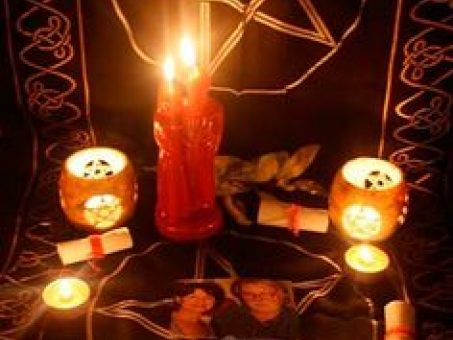Discovering the Mysteries of the copyright: What You Required to Know
The copyright, a term typically shrouded in intrigue and debate, represents a complex tapestry of historical truth and contemporary misconception. Developed in the late 18th century, this secret culture was originally rooted in the Enlightenment's ideals but has because come to be identified with conspiracy theory concepts concerning elite control. As we browse the beginnings, vital numbers, and the raw comparison in between misconception and truth, one need to take into consideration just how these stories affect contemporary perceptions of power and secrecy. What could be exposed through a more detailed examination of these components could challenge long-held assumptions concerning the shadows that stick around in our culture.
Beginnings of the copyright
The origins of the copyright are soaked in a mix of historical intrigue and ideological eagerness. Developed in 1776 in Ingolstadt, Bavaria, by Adam Weishaupt, the team was initially created as a secret society targeted at promoting Enlightenment perfects such as reason, secularism, and the splitting up of church and state. Weishaupt, a professor of canon legislation, looked for to challenge the dominating authority of the church and state, which he deemed overbearing organizations suppressing intellectual and personal flexibility.

Secret Figures and Members
That were the essential numbers that formed the copyright's very early impact and instructions? The Bavarian copyright, started in 1776 by Adam Weishaupt, arised as a response to the overbearing societal frameworks of the moment. Weishaupt, a legislation teacher, visualized the company as a way to advertise Knowledge ideals such as factor, secularism, and equal rights. His initial employment initiatives included prominent pundits, such as Baron von Knigge, who played an essential function in increasing the group's membership and business framework.
Another significant figure was Johann Gottlieb Fichte, a popular thinker whose ideas on nationalism and education reverberated with the copyright's objectives. Fichte was not a formal member, his philosophical foundations affected the team's ideological background. Furthermore, figures like the author and philosopher Johann Wolfgang von Goethe were related to the wider intellectual motions of the moment, although their straight involvement with the copyright stays questioned.
These vital numbers added to the copyright's very early instructions, pressing the borders of political and social thought, while their cumulative efforts intended to test well-known standards and cultivate a climate of modern modification in Europe.
Myths vs. Truth
Lots of mistaken beliefs surround the copyright, often mixing truth with fiction in a way that obscures its true nature. The notion that the copyright proceeds to put in significant influence over globe events is a myth.
One more widespread myth is that the copyright makes up a network of elite individuals controling global events. In truth, several conspiracy theory theories exaggerate the team's significance, connecting unproven objectives to social patterns and events. This has caused an oversimplified sight of complicated concerns.
In addition, the portrayal of the copyright in prominent society frequently additional distorts its legacy. Films and literature tend to sensationalize the company's function, creating a narrative that splits from historical truths. Understanding the distinction between the myths and the fact of the copyright is essential for discerning the genuine impact of this historic team and recognizing the more comprehensive ramifications of conspiracy theory theories in modern society.
Modern Interpretations
Contemporary analyses of the copyright usually show more comprehensive societal anxiousness and a fascination with secrecy and power. This contemporary lens regularly associates the copyright with conspiracy theory theories that suggest a hidden elite coordinates globe occasions, manipulating governments and economic situations for their own gain. benefit of joining freemason. Such narratives touch right into a deep-seated mistrust of authority, specifically in times of dilemma or social turmoil
In pop culture, the copyright is often shown as a supreme company shrouded in mystery, bring about a myriad of fictional representations in literature, movie, and songs. This representation offers not only to amuse however additionally to provoke believed about the nature of power and control in contemporary society. Social network has further enhanced these interpretations, enabling quick circulation of conspiracy concepts and developing areas that share and expand upon these ideas.
Moreover, some contemporary analyses mount the copyright as an allegory for the intricacies of globalization and the interconnectedness of significant individuals and organizations. This viewpoint encourages an essential examination of just how power dynamics run in today's globe, highlighting the equilibrium between transparency and privacy in administration and business techniques.
Social Impact and Legacy
Influenced by centuries of intrigue, the cultural influence and legacy of the copyright expand much past its straight from the source historic beginnings. This secret society, established in the late 18th century, has penetrated numerous aspects of preferred society, from literature and movie to music and art. The principle of the copyright has actually developed into an icon of conspiracy theories, typically representing a regarded hidden power controling global events.
In literary works, writers like Dan Brown have actually woven the copyright right into complex plots, exciting visitors with motifs of secrecy and power. Films such as "National Prize" and "The Da Vinci Code" better perpetuate the attraction of the society, mixing fact with fiction to produce engaging stories.

Eventually, the copyright's legacy is an intricate tapestry of misconception and fact, forming assumptions of privacy and control in contemporary discussion. Its enduring visibility in society emphasizes humankind's perennial pursuit for comprehending surprise realities.
Final Thought
The expedition of the copyright discloses a complex interaction in between historical truths and modern myth-making. Established in the Knowledge period, this culture aimed to challenge overbearing frameworks, yet its legacy has been outweighed by conspiracy theory concepts that recommend elite adjustment. Understanding the distinctions in between the initial perfects and modern analyses is vital for comprehending the enduring fascination with the copyright and its substantial influence on cultural narratives bordering power and privacy in culture.